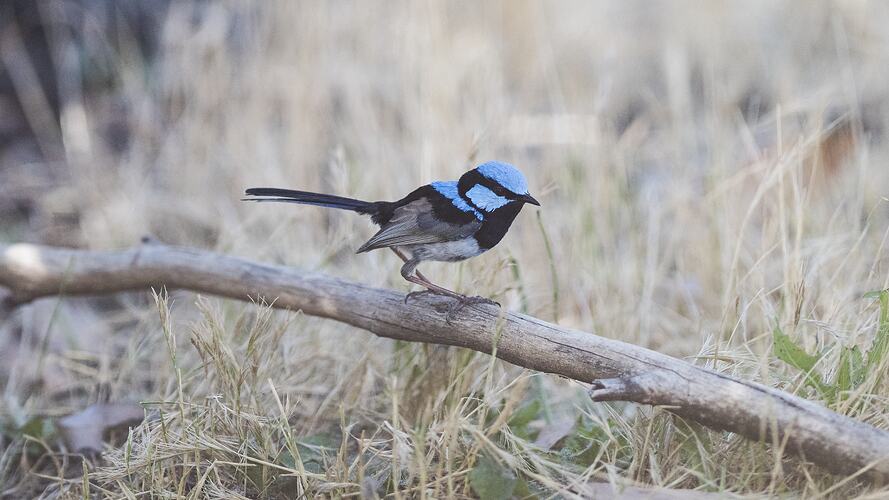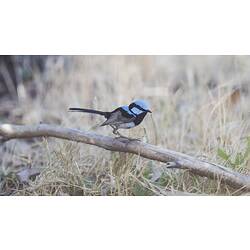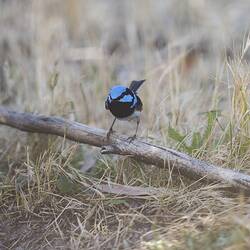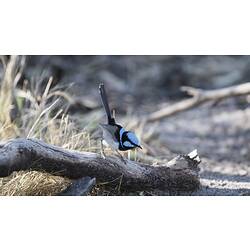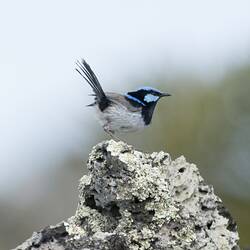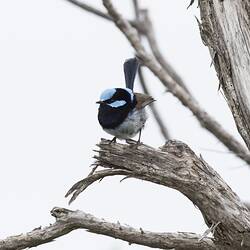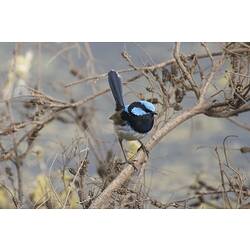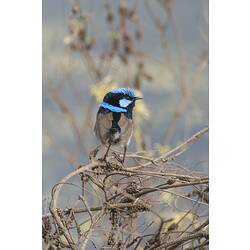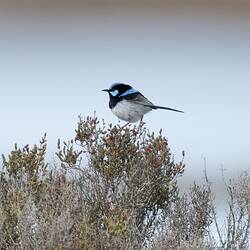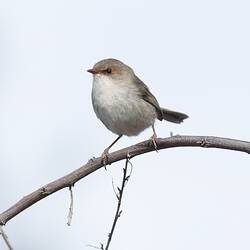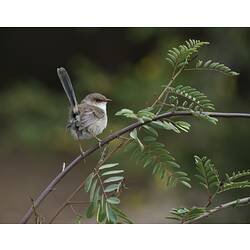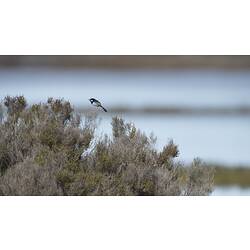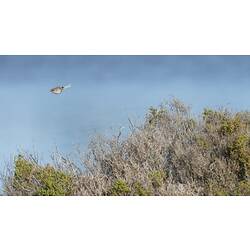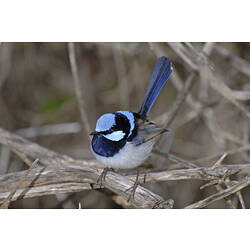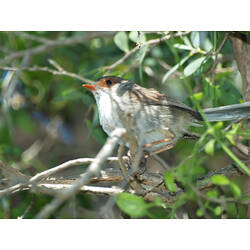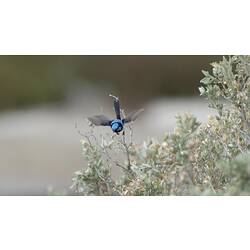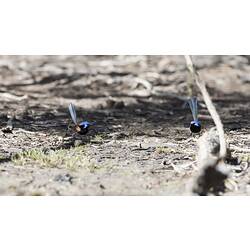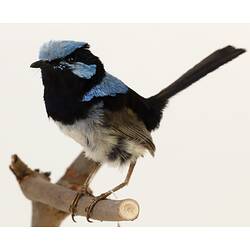General Description
Males: during the breeding season, upper half of the body is black with bright blue patches on the top of the head, beneath the eyes and around the neck; lower half white. Chest black with a blue-black patch. Have a drab eclipse plumage after the breeding season. Females and young birds: light brown bodies; dull red-orange around the eye. Bill to tail length is up to 15 cm.
Biology
Superb Fairy-wrens form small family groups that co-operate to raise young in a single nest. Along with the young, groups consist of several females and one dominant male. Feeding also occurs in small groups. They mainly eat insects caught on the ground, but also some seeds and fruit. Females construct an untidy, dome-shaped nest made from grasses, moss, twigs and spider webs, typically located in a low shrub. The usual clutch size is three to four eggs. Many of the eggs result from pairings outside of the dominant male.
Distribution
South-eastern mainland Australia and Tasmania.
Habitat
Areas with thick undergrowth.
More Information
-
Animal Type
-
Animal SubType
-
Brief Id
A distinctive small fairy-wren with a blue, black and white body. Tail is held upright.
-
Colours
Blue, Black, White
-
Maximum Size
15 cm
-
Habitats
-
Diet
Omnivore
-
Diet Categories
Insects, Invertebrates, Seeds, Fruit
-
Endemicity
-
Commercial
No
-
Conservation Statuses
CITES: Not listed, FFG Threatened List: Not listed, EPBC Act 1999: Not listed, IUCN Red List: Least Concern
-
Taxon Name
-
Common Name
Superb Fairy-wren
-
Kingdom
-
Phylum
-
Subphylum
-
Class
-
Order
-
Family
-
Genus
-
Species Name
cyaneus
